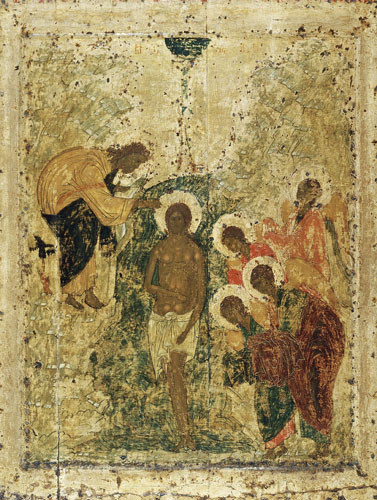
28 Aug The Beheading of St. John the Baptist
‘but to sit on My right hand and on My left is not Mine to give, but it is for those for whom it is prepared.’ (Mark 10:40)
These are the words of our Lord to James and John, the sons of Zebedee. They asked Christ if, in His glory, they could be seated on His right and left hand. In traditional Orthodox iconography, when we see Christ the Great High Priest, seated in glory, it is His mother, the Most Holy Theotokos, and the Holy Prophet, Forerunner and Baptist John who are seated on Christ’s right and left. It is they for whom those seats have been prepared.
As we commemorate this solemn and holy day of the Church, that of the beheading of St. John the Baptist, it is interesting to think of the similarities between the Theotokos and the Forerunner. We have only recently remembered the falling asleep of the Theotokos, and it should come as no surprise, as we remember St. John’s beheading that these two would be seated at the right and left hand of Christ.
There are countless feasts dedicated to the Theotokos. We think first and foremost of those major feasts related to her life, such as the Annunciation, her entry into the Temple and her Dormition, amongst others, as well as those which are not major feasts, but commonly celebrated in the life of the Church, such as the Feast of the Protection. John the Forerunner also many feasts attributed to his memory. In addition to his beheading, he is commemorated on January 7th (the day after Theophany), September 23 (his conception) February 24th (the first and second findings of his head), May 25th (the third finding of his head), and June 24 (his Nativity). Besides Christ, St. John and the Theotokos are the only other saints whose births are commemorated in the life of the Church.
Both the Theotokos and the Baptist were children to righteous parents (Joachim and Anna and Zachariah and Elizabeth), and both were born to parents who were advanced in age. Both were set aside at an early age for service to God. Mary was brought to the Temple at the age of 3, and John went to live in the desert at a very young age (John’s secluding himself from the world, and strict way of life often have led to him being referred to as the first monastic). Both Mary and John were miraculously fed by the hands of angels (Mary in the Temple; John in the desert).
The ladder that Jacob saw (Genesis 28:12) is viewed as a type of the Theotokos. She connects heaven and earth through Christ. St. John connects the Old to the New Testament. As the forerunner of Christ, he is the rightfully called the last Old Testament prophet, while at the same time, being the first and only prophet of the New Testament.
Both were humble and obedient. Mary accepts God’s will that she conceive and bear the Word of God (“…Behold the maidservant of the Lord! Let it be to me according to your word.” (Luke 1:38), John obediently prepares for the coming of the Word of God. Despite his growing fame amongst the people, he humbly retreated to the background when Christ was ready for His earthly ministry to begin (“He must increase, but I must decrease.” (Jn. 3:30). His obedience to his role as forerunner continued even beyond his death, as he preached Christ to those in Hades, preparing them for Christ’s glorious Resurrection.
When we think and ponder on all of these things, it is no wonder that the Theotokos is most blessed among women (Lk. 1:28) and why our Lord said of the Baptist, “…among those born of women, there is not a greater prophet than John the Baptist; (Lk. 7:28).
Brothers and sisters, let us look to both of these great saints, found worthy to sit and the right and left hand of our Lord and Savior Jesus Christ, and seek to imitate their strength, their obedience, their holiness, their chastity and their humility.
May the blessings of Christ our Lord, through the prayers and intercessions of His mother and of the Forerunner and Baptist John be with each and every one of you, on this most solemn day and all days.
In Christ,
Fr. M



